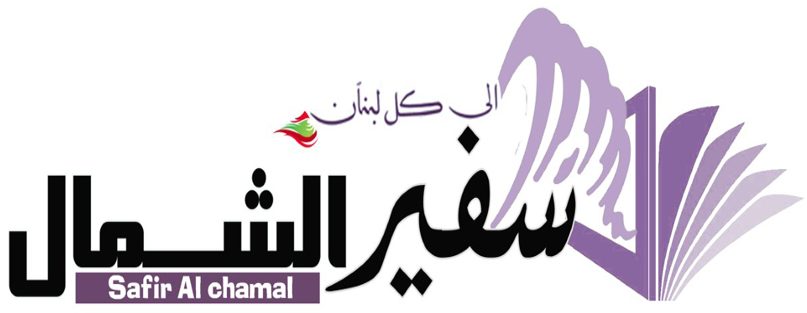في 23 فبراير (شباط) 2022 ، اجتمعت المشاريع الاوروبية الشقيقة H2020 PAVE و CONNEKT و PREVEX بتمويل من الاتحاد الأوروبي لدراسة مرونة وهشاشة المجتمعات في التطرف العنيف، للتبادل حول نتائج البحوث الأولية ، ومناقشة القواسم المشتركة والاختلافات بين المشاريع الثلاثة، وكذلك لاستكشاف سبل لمزيد من التعاون والمشاركة والتنسيق في السياسات العامة في المستقبل.
انعقد الاجتماع في شكل هجين، مما سمح بالمشاركة على الإنترنت وكذلك شخصيًا في Fondation Maison des sciences de l’homme (FMSH) في مؤسسة بيت علوم الانسان في باريس.
قدم باحثون من المشاريع الثلاثة نتائج أولية، ووصفوا تجاربهم والتحديات التي واجهوها عند البحث عن التطرف الراديكالي والعنيف (VE) في غرب البلقان ومنطقة الشرق الأوسط وشمال إفريقيا. تطورت المناقشات حول محاذير المصطلحات، والتركيز المشترك على المستوى المتوسط، والنتائج الملموسة للبلدان والاتجاهات الإقليمية حول دوافع وخصائص التطرف العنيف في منطقة البلقان ومنطقة الشرق الأوسط وشمال إفريقيا، واستكشاف إمكانات المقارنة بين هاتين المنطقتين المحوريتين وأنواع مختلفة من التطرف.
تم إعداد الجلسات لتشمل متحدثًا واحدًا لكل مشروع في كل جلسة، من أجل تسليط الضوء على الموضوعات من منظور المشاريع الثلاثة.
ركزت الجلسة الأولى على المناقشات حول المصطلحات والعروض التقديمية لمجالات التركيز الرئيسية والنهج الشاملة للمشاريع الثلاثة. تمت مناقشة الدلالات المعيارية التي يحملها مصطلحا التطرف والمرونة واتفق الباحثون على أن المصطلحات التطبيقية تحتاج إلى التعامل معها بحذر حتى لا تقع في فخ نقل النماذج المناسبة للجميع وإعطاء إمكانية المقارنة للمواقع المتنوعة التي تم فحصها بالمشاريع الثلاثة. بينما يميل المجتمع الدولي إلى وضع مصطلحات ثابتة، تحمل هذه المصطلحات معاني متباينة في السياقات المحلية المختلفة. ومع ذلك ، تريد المشاريع الثلاثة المساهمة في تغيير معنى هذه المصطلحات وإعادة المطالبة بها بدلاً من تجنبها.
وقدمت الجلسة الثانية كيفية تصور المشاريع للمجتمعات وتفعيلها. على الرغم من مشاركة المجتمع كوحدة تحليل مشتركة على المستوى المتوسط ، تعمل المشاريع الثلاثة مع تعريفات مختلفة للمصطلح.
تتفهم CONNEKT المجتمعات على أنها إما سياقات اجتماعية مادية أو غير مادية تمثل شبكة من العلاقات المتبادلة الفردية والجماعية ، بحيث يمكن للمجتمع أن يكون له تعريف جغرافي ويمكن دراسته بغض النظر عن موقعه المادي.
بينما يتم فهم المجتمعات من الناحية المفاهيمية على أنها بيئات تمكينية (المجالات التي تخلق فيها مجموعة من العوامل بيئة مواتية حيث يكون التطرف العنيف ممكنًا)، في مشروع PREVEX ، يتم إنشاء مجتمع من الأسفل إلى الأعلى من حالة إلى أخرى لكل موقع ميداني وفقًا للفهم من السكان المعنيين.
في PAVE ، ينصب التركيز على المجتمعات الجغرافية ، أي البلديات. يسمح ذلك بفهم أدوار أصحاب المصلحة والقادة المهمين ، وتصميم التوصيات المستمدة من البحث مباشرة إلى هؤلاء ، نظرًا لأنهم يشغلون مناصب متميزة لمعالجة التطرف العنيف.
كان موضوعًا إضافيًا للمناقشة المقارنة هو الفرق بين المجتمعات عبر الإنترنت وغير المتصلة وديناميكيات التطرف المرتبطة.
خلال إحدى الجلسات التي ركزت على نتائج الدول من غرب البلقان ولجنة واحدة تركز على النتائج في منطقة الشرق الأوسط وشمال إفريقيا ، تم إثبات النطاق الهائل للبيانات التي تم جمعها وتنوع سياقات البحث. ويبدو أن أحد التحديات الشائعة هو كيفية تجنب إعادة إنتاج الوصم الموجود بالفعل. يشعر السكان المسلمون على وجه الخصوص بالوصم ويظهرون درجة عالية من التعب البحثي – “توقفوا عن البحث عنا!” – كما اقتبس أحد المشاركين المستجيبين من صربيا.
في جميع السياقات التي تمت دراستها ، لوحظ أن المقاربات الحكومية تجاه التطرف العنيف لا تزال مؤمنة بشكل كبير. من أجل التغلب على أخطاء الماضي في معالجة التطرف العنيف ، تتفق المشاريع الثلاثة على أن التركيز على بناء المرونة يحمل إمكانات كبيرة للتحسين.
بالإضافة إلى ذلك ، تمت مناقشة الدور الغامض لمنظمات المجتمع المدني في برامج مكافحة وإزالة التطرف في كلا المنطقتين. في حين أن منظمات المجتمع المدني المحلية يمكن أن تساهم بشكل هادف في بناء المرونة ضد التطرف العنيف ، فإن منظمات المجتمع المدني العاملة والممولة دوليًا تميل إلى الافتقار إلى الشرعية وغالبًا ما يُنظر إلى عملها على أنه مجرد إرضاء للمانحين من قبل الأفراد من المجتمعات. فيما يتعلق بكلتا المنطقتين، من المهم أخذ العوامل الخارجية في الاعتبار، وليس التركيز فقط على الديناميكيات الداخلية للمجتمع. وهي تتأثر بشدة من الخارج بالسياسات الوطنية، وتدخل الدول الأجنبية والجهات الفاعلة غير الحكومية، فضلاً عن التفاعلات عبر الوطنية مع الشتات.
بشكل عام، تبين أن هناك الكثير من أوجه التشابه فيما يتعلق بالتفسيرات المطبقة لحدوث وعدم حدوث التطرف العنيف عبر المشاريع وعبر المناطق، في حين أن الأنواع الملحوظة من التطرف والتطرف العنيف، وتختلف تفاعلاتها إلى حد كبير. سيتم وضع هذه الملاحظة في الاعتبار في عملية تحليل البيانات الإضافية، وستظل مسألة كيفية إجراء البحوث الخاصة بالسياق والتي تسمح في نفس الوقت بدرجة معينة من القابلية للمقارنة ذات صلة بالمشروعات الثلاثة.
بعد هذا الجهد التعاوني المثمر الأول من قبل المشاريع الثلاثة الشقيقة ، نتطلع إلى مواصلة التبادل وتوسيع وتكثيف تعاون مشاريعنا الثلاثة في الأشهر القادمة!
version française
Symposium de recherche des projets sœurs H2020 sur l’extrémisme violent et la manière dont les sociétés y font face.
On 23rd February 2022 the H2020 sister projects PAVE, CONNEKT and PREVEX met to exchange about preliminary research findings, to discuss commonalities and differences between the three projects, as well as to explore avenues for further cooperation and future coordinated policy engagement. The meeting took place in a hybrid format, allowing for participation online as well as in-person at the Fondation Maison des sciences de l’homme (FMSH) in Paris.
Researchers from the three projects presented preliminary results, described their experiences and the challenges they encountered when researching radicalisation and violent extremism (VE) in the Western Balkans and MENA region. The discussions evolved around terminology caveats, the common focus on the meso level, concrete country findings and regional trends on drivers and features of violent extremism in the Balkans and MENA region, and exploring possibilities for comparison between these two focus regions and different kinds of extremisms.
The sessions were set up to include one speaker per project in each session, in order to shed light on the topics from all three projects’ perspectives.
The first panel focused on discussions about terminology and presentations of the main focus areas and overall approaches of the three projects. The normative connotations carried by the terms radicalisation and resilience were discussed and the researchers agreed that the applied terminology needs to be treated with caution in order to not fall into the trap of transporting one-fits-all paradigms and assigning comparability to the diverse localities examined by the three projects. While the international community has a tendency to establish fixed terminology, these terms carry diverging meanings in the different local contexts. Nevertheless, all three projects want contribute to changing and re-claiming the meaning of these terms instead of avoiding them.
The second session introduced how the projects conceptualise and operationalise communities. Despite sharing the community as common meso level unit of analysis, the three projects work with different definitions for the term.
CONNEKT understands communities as either physical or non-physical social contexts that represent a network of individual and collective interrelations, so that a community can have both a geographical definition and can be studied regardless of its physical location.
While conceptually understanding communities as enabling environments (areas in which a combination of factors creates a conducive environment where violent extremism is possible), in the PREVEX project, a community is established bottom-up from case to case for each field site according to the understanding of the concerned population.
In PAVE, the focus lies on geographical communities, i.e., municipalities. This allows to grasp the roles of important stakeholders and leaders, and tailor recommendations derived from research directly to these, since they hold privileged positions to tackle violent extremism.
An additional topic of comparative discussion was the difference between online and offline communities and connected radicalisation dynamics.
During one panel focussing on country findings from the Western Balkans and one panel focussing on findings in the MENA region, the immense range of collected data and the diversity of the research contexts was substantiated. One of the commonly experienced challenges appeared to be how to avoid the reproduction of already existing stigmatisation. Especially Muslim populations feel stigmatised and show a high degree of research fatigue – “stop researching us!” – as one participant quoted respondents from Serbia.
In all studied contexts, it was observed that governmental approaches to VE are still heavily securitised. In order to overcome past mistakes in addressing violent extremism, the three projects agree that a focus on building resilience carries great potential for improvement.
In addition, the ambiguous role of civil society organisations in counter and de-radicalisation programmes in both regions was discussed. While locally-based civil society organisations can meaningfully contribute to building resilience against VE, internationally operating and – funded CSO’s tend to lack legitimacy and their work is often perceived as merely donor-pleasing by individuals from the communities. With the regards to both regions, it is important to take external factors into account, and not only focus on community-internal dynamics. These are highly influenced from the outside by national policies, intervention by foreign state and non-state actors, as well as transnational interactions with the Diaspora.
In general, it was shown that there are a lot of similarities with regards to explanations applied for the occurrence and non-occurrence of violent extremism across the projects and across the regions, while the observed types of radicalisation and violent extremism, and their interactions vary greatly. This observation will be kept in mind in the process of further data analysis and the question of how context-specific research can be conducted that at the same time allows for a certain degree of comparability will stay relevant for all three projects.
After this first fruitful collaborative effort by the three sister projects, we look forward to continue the exchange and to expand and intensify our three projects’ cooperation in the coming months!
Related Posts














